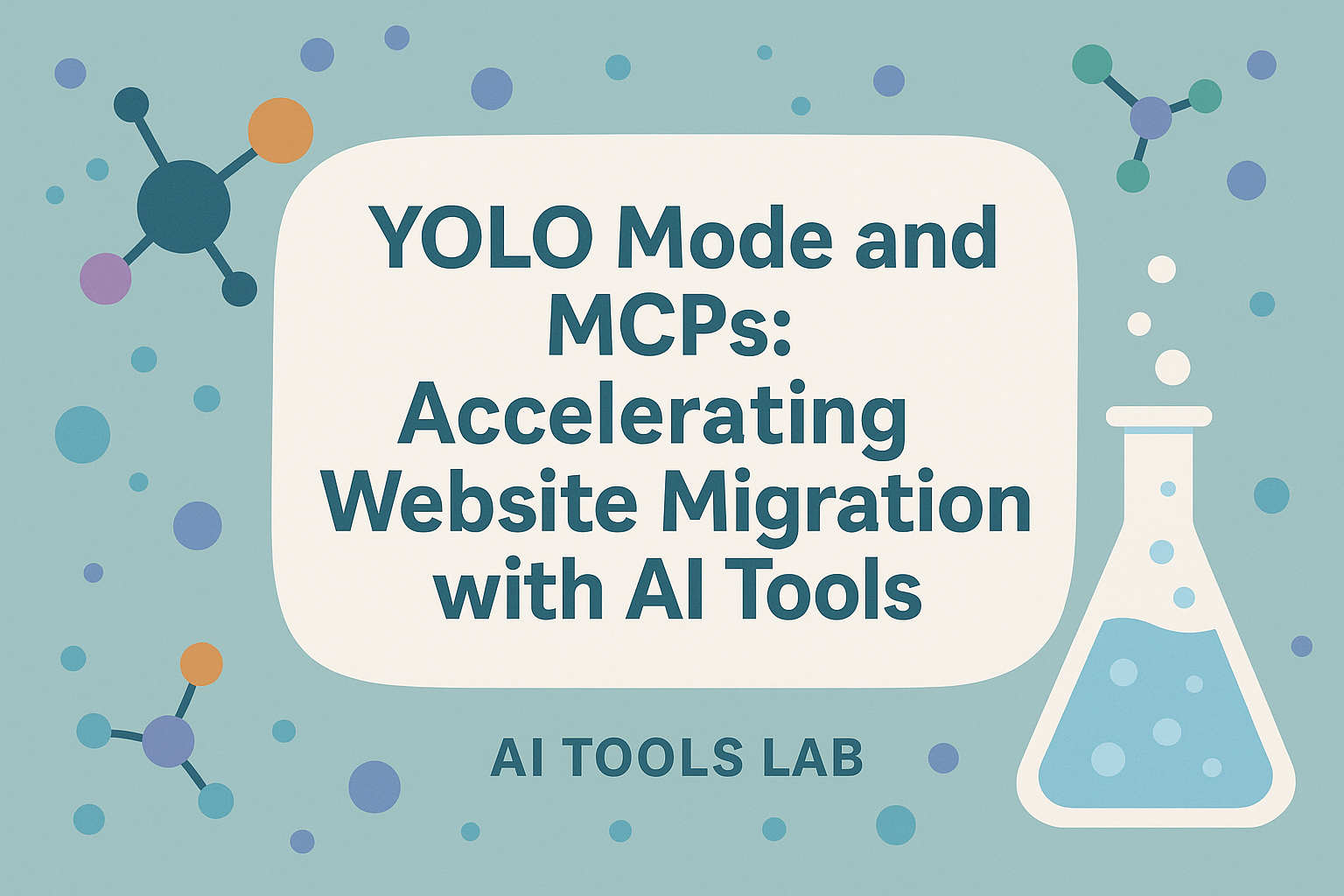
YOLO Coding: Migrating from Static HTML to Astro with AI Tools
When Ryan decides to migrate an entire website framework over a weekend using "YOLO Mode" AI coding, you know you're in for a wild ride. Armed with multiple AI models, MCP tools, and a dangerous amount of confidence, he transforms the AI Tools Lab site from static HTML to Astro—while learning the framework on the fly. Watch him juggle Gemini 2.5 Pro's visual capabilities, Claude's web search prowess, and Puppeteer screenshots to pull off what should have taken weeks in just a few days. The results aren't perfect, but they're functional, and the learning curve is steep enough to give anyone vertigo. Sometimes the best way to learn is to jump off the cliff and build your wings on the way down.
In this episode, Ryan MacLean shares his weekend experiment with ‘YOLO Mode’ (You Only Live Once) in AI-assisted coding, where he migrated the ai-tools-lab.com website from static HTML to Astro. Ryan discusses his approach of using multiple AI models with Model Context Protocol (MCP) tools, particularly highlighting how he combined Gemini 2.5 Pro’s multimodal capabilities with Claude Sonnet 3.7’s web search functionality to tackle different aspects of the project. Ryan explains the challenges he faced, including models struggling with large CSS files and Base64-encoded graphics, and reveals his workflow using Puppeteer and Sequential Thinking MCPs in Windsurf to compare and migrate the site effectively.
Throughout the conversation, Ryan emphasizes the importance of vigilant oversight when allowing AI tools to execute commands, especially around version control and API keys. He demonstrates how to set up MCPs in Windsurf, add Context7 for documentation access, and use to-do lists to checkpoint progress across lengthy AI sessions. Despite some visual discrepancies in the migrated site, Ryan found the process incredibly educational, allowing him to simultaneously learn Astro, improve his testing methodology with Vitest, automate deployments with Netlify, and enhance his work with Claude. Jason Hand, who initially suggested using AI for the migration, expresses excitement about how quickly they’ve been able to move from a static HTML site to a more maintainable content management system using these AI-powered development approaches.
Jump To
Key Takeaways
- AI 'YOLO Mode' can significantly accelerate website migrations, but requires constant human supervision to prevent security risks and unwanted changes
- Combining different AI models (like Gemini 2.5 Pro for multimodal tasks and Claude Sonnet 3.7 for web searches) creates a more effective development workflow
- Model Context Protocol (MCP) tools like Puppeteer and Sequential Thinking in Windsurf enable AI to interact with websites and execute multi-step processes
- AI models struggle with large files (like CSS) and special formats (like Base64), requiring workarounds or alternative approaches
- Long AI sessions face context window limitations; creating checkpoints and to-do lists helps maintain progress across multiple sessions
